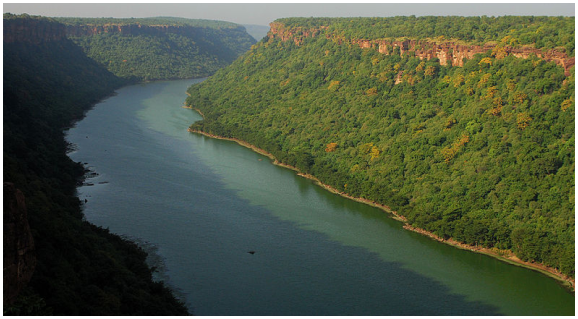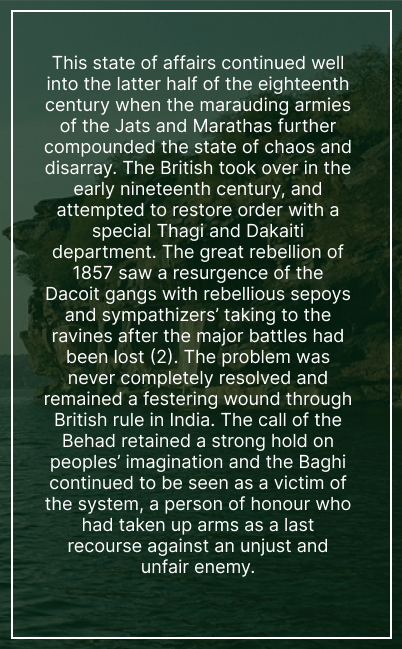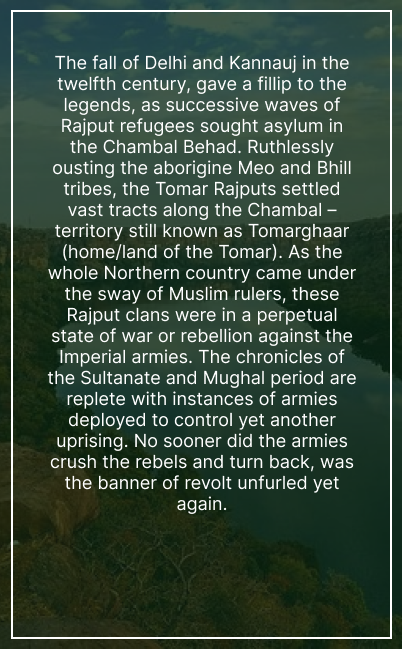Get Support
123-456-789-10
ABOUT CHAMBAL SAFAR
History of Chambal
The Chambal ravines’ labyrinthine maze of deep gullies formed by accelerated erosion, were a natural ally to those seeking to hide or shelter in their folds. The fall of Delhi and Kannauj in the twelfth century, gave a fillip to the legends, as successive waves of Rajput refugees sought asylum in the Chambal Behad. The divine origin of Indian Rivers is an article of faith for many millions of believers. Celebrated, and worshipped, the River is revered as a physical manifestation of the munificence of the omnipotent Lord. Interestingly, the River Chambal, one of the major rivers feeding into the Yamuna, and thence Ganga, is completely devoid of any such antecedents. The earliest mentions of Chambal are found in the epic Mahabharata; King Rantideva of Dasapura (Mandasaur in MP), son of Sankrti is praised for having achieved unrivaled fame by distributing beef along with food grains to Brahmans. “A great river oozed from the heaps of those animal hides and it became known everywhere as the ‘River of Hides’ – Carmanvati (carman-skin, hide) (1).

River around Chambal



The Baghis’ survival depended on the sympathy and complicit support of the local population. The emergence of organized gangs, caste based vendettas and kidnapping for ransom led to an erosion of this support base. The Baghi lost the high moral ground and became more of a common thug, losing his place of honour in local folklore. The late twentieth century saw several rehabilitation programmes combined with relentless law enforcement. Appeals to surrender by the social activist Vinobha Bhave and by Jayprakash Narayan yielded results and the 1970’s saw mass surrenders by former dacoits. Straggling groups continued to rear their head over the next couple of decades but were ruthlessly stamped out, and were rarely more than petty criminals trying to don the mantle of the rebels of yore. The Chambal Ravines are largely peaceful today. Their romantic allure remains, but more as a part of the historical narrative of this land than as a way of life.
Notable dacoits include:
- Gabbar Singh Gadaria – inspired the* famous 1975 film Sholay, based on his life.
- Paan Singh Tomar – soldier, athlete, who resorted to becoming a Baaghi due to the injustice he faced.
- Daku Man Singh.
- Dadua Patel.
- Veerappan.
- Jagga Jatt.
- Phoolan Devi.
- Rambabu Gadariya – the last dacoit of Chambal.
